Timbre in music is a unique, game-changing aspect of sound.
It’s the sonic signature that differentiates a piano from a guitar when playing the exact same note.
It’s the quality that makes your favorite singer’s voice distinct, and it’s the element that gives every instrument its characteristic sound.
With a thorough understanding of timbre, you can add some unique sizzle to your mixes, making them stand out in the vast ocean of sounds.
In this explorative journey, we’re going to dive deep into:
- The definition of Timbre ✓
- Its importance, effect, and impact ✓
- Tone quality ✓
- The transformative impact of different timbres ✓
- The world of harmonics & overtones and their effect on Timbre ✓
- The intriguing interplay between pitch and timbre ✓
- The wonder of vocal timbre and its versatility
- How to create a unique mix using timbre tips & tricks ✓
By the end of this article, you’ll have the tools to elevate your production game and transform your tracks from basic to epic.
So, let’s dive in…
Table of Contents
- What is Timbre?
- Unique Timbre in Music: Timbre Examples
- Sound Waves & Frequencies
- The Frequency Spectrum in Music Production
- How Different Musical Instruments Affect Timbre
- Harmonics: The Hidden Dimension of Timbre
- Overtones & Their Contribution to Sound Quality
- How to Manipulate Harmonics for Unique Timbres in Your Beats
- Creating Unique Sound through Pitch & Timbre Manipulation
- Manipulating the Human Voice for Interesting Musical Timbres
- Timbre in Music: Final Thoughts
What is Timbre?
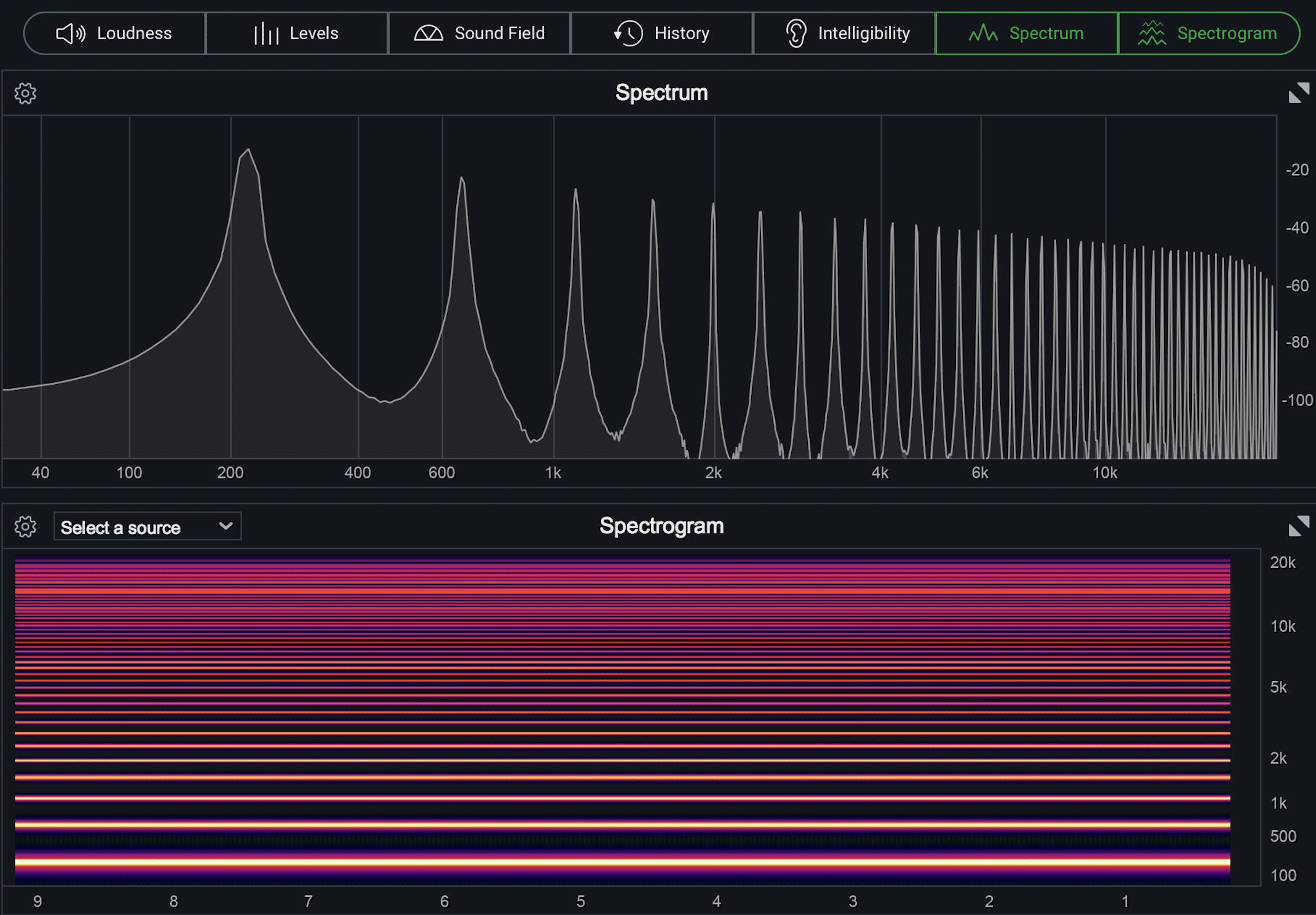
In the vast universe of music production, one term frequently reverberates through the studio walls 一 ‘Timbre.’
While it might sound like a complex concept, when we describe timbre, we’re essentially talking about the unique identity of each sound or note played in the world of music.
It’s what makes each auditory experience distinctive.
It’s what separates a piano’s tone from a violin, despite playing the same note, and enables us to distinguish one voice from another in a choir.
The world of timbre is like the palette of a painter, offering a spectrum of colors that define the sonic picture we create as music producers.
As producers and beatmakers, understanding timbre is the ticket to crafting rich, textural soundscapes.
The term originated from the Greek word ‘timbē,’ meaning ‘color,’ and it’s often referred to as ‘tone color’ or ‘tone quality.’
Essentially, timbre describes the sonic characteristics of a sound that distinguishes it from others, even if they share the same pitch and loudness.
It’s the secret ingredient that gives each sound its unique sonic flavor.
Unique Timbre in Music: Timbre Examples
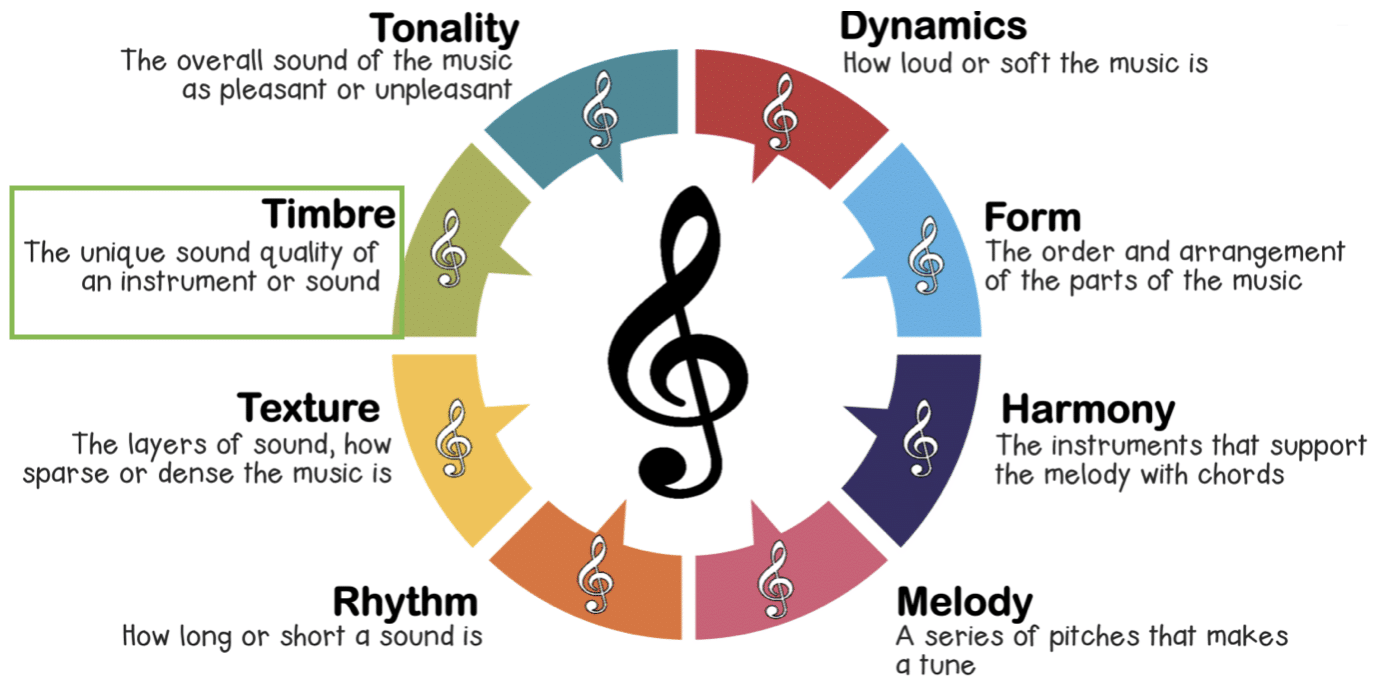
As crucial as melody and rhythm are in music, timbre carries an equally important role, if not more.
Think of it as the sonic attire of a note; it’s how a note ‘dresses up.’
The same note can be played on a range of instruments or sung by different voices, and each time, it would sound unique.
That’s the magic of timbre in music, making each rendition of a note unique, despite sharing the same pitch.
It’s an essential tool in a music producer’s arsenal, enabling them to add depth, variety, and character to their music.
Moreover, timbre plays a vital role in setting the mood and emotional tone of a piece.
A gentle strumming of a nylon string guitar can create a soothing atmosphere, while the bright, resonant sound of a brass section can fill the room with energy.
In essence, by understanding and manipulating timbre, music producers can craft an emotional narrative within their music, guiding the listener’s emotional response to their work.
Beyond the individual notes, the importance of timbre extends to the arrangement and orchestration of a piece.
The blending of different timbres can result in a full-bodied, rich texture, often described as the ‘sonic landscape’ of a track.
Just as a chef combines different flavors to create a complex and satisfying dish, a producer can blend a variety of timbres to create a multifaceted sonic experience.
Sound Waves & Frequencies
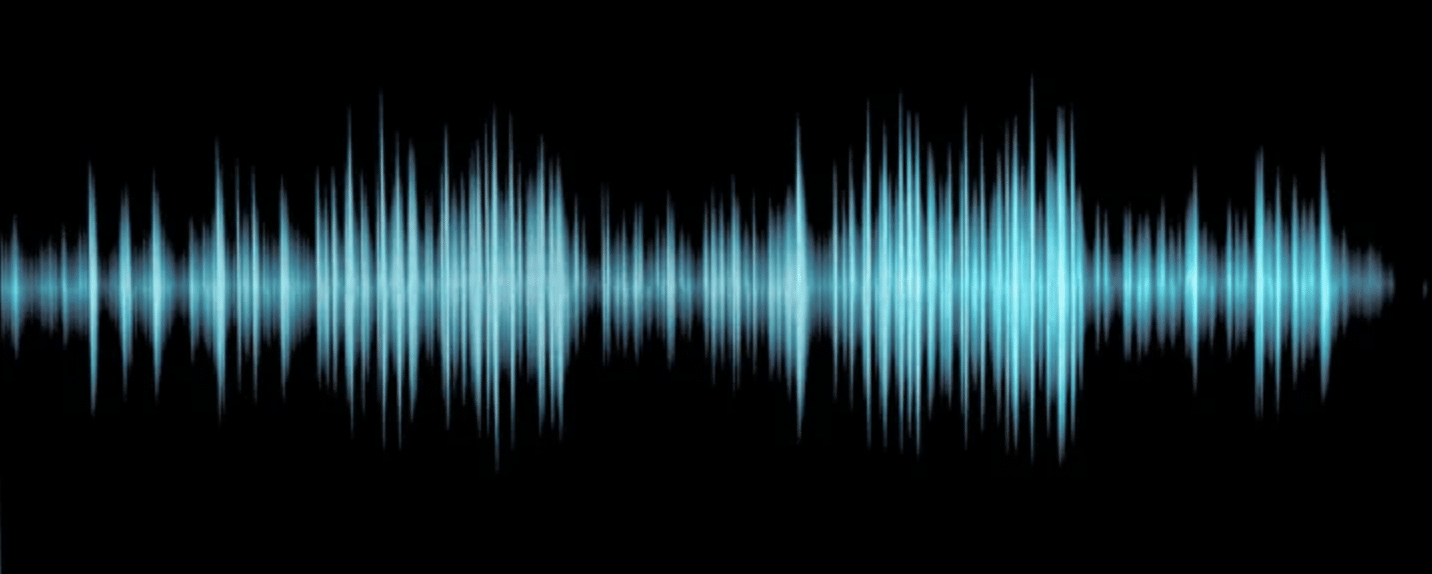
Sounds, at their most fundamental level, are vibrations traveling through a medium, such as air or water.
These vibrations generate pressure variations, creating a pattern of waves that our ears pick up and our brain interprets as sound.
Each sound wave is characterized by its frequency, which determines the pitch of the sound, and its amplitude, which influences the sound’s volume.
However, when it comes to timbre, there’s more to the story.
While frequency and amplitude play a role, timbre is primarily determined by the waveform, or shape of the sound wave.
The waveform represents how the pressure variations of a sound wave change over time.
Different instruments or voices will produce different waveforms 一 even when playing or singing the same note at the same volume.
These differences in the waveform are what create the unique timbres we perceive.
Moreover, it’s not just the waveform of the fundamental frequency (the pitch of the note) that shapes a sound’s timbre.
Each musical note we hear isn’t a single frequency but rather a complex blend of multiple frequencies.
These additional frequencies are called harmonics or overtones, and they add additional sonic layers that further define the sound’s timbre.
Together, these aspects create the complex tonal quality we recognize as timbre in music.
The Frequency Spectrum in Music Production
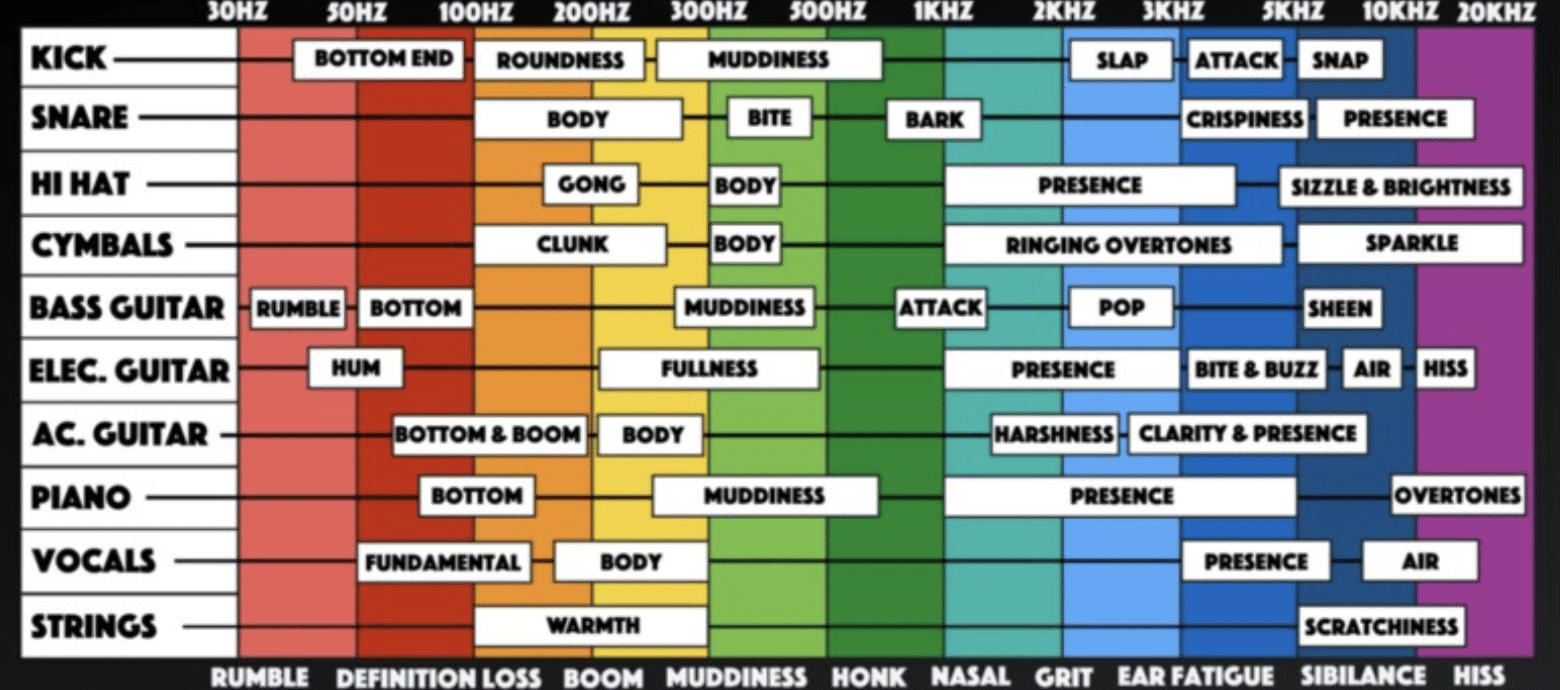
As beatmakers and producers, our primary canvas is the frequency spectrum.
It represents the complete range of frequencies that are audible to the human ear, roughly from 20 Hz to 20,000 Hz.
The frequency spectrum is like a sonic rainbow, and each sound we use in our tracks occupies a specific ‘color’ or frequency within this spectrum.
Learning to visualize and understand this spectrum is key to mastering timbre in music production.
The frequency spectrum is divided into several sections:
- Bass (low frequencies)
- Midrange
- Treble (high frequencies)
Each instrument has its own spectral fingerprint, which describes the spread of frequencies that it produces.
For instance, a bass guitar primarily occupies the lower end of the spectrum, while a flute sits at the higher end.
Understanding these spectral fingerprints can help you select and combine sounds that complement each other, leading to cleaner mixes and more balanced tracks.
Mastering the frequency spectrum also enables you to shape the timbre of your sounds through audio processing techniques.
Tools like equalizers and filters allow you to boost or cut frequencies, altering the timbre of the sound.
For example, you could make a guitar sound warmer by boosting the low-mid frequencies, or make a vocal sound brighter by enhancing the high frequencies.
These techniques offer endless possibilities to create unique timbres and textures in your music.
-
Pro Note: The Fundamental Frequency

At the core of every musical note lies its fundamental frequency.
This frequency is the lowest frequency of a sound, and it’s what our brains use to identify the pitch of a note.
However, the fundamental frequency alone does not define the sound’s timbre.
What gives each sound its unique character is the combination of the fundamental frequency and the harmonic frequencies that accompany it.
This array of frequencies is what creates the intricate tonal quality of each sound.
How Different Musical Instruments Affect Timbre

Different instruments are known for their distinctive timbres.
From the warm strum of a guitar to the crisp clang of a cymbal, each musical instruments play a unique sound (again, even when playing the exact same note).
This is due to the varying ways in which each particular musical instrument produces sound.
For instance, a guitar string vibrating back and forth generates different waveforms than a drumhead being struck, resulting in different timbres.
Also, the material of the instrument and its size and shape play critical roles in determining the sound’s timbre.
For example:
- Wind instruments offer a variety of timbres based on the air’s path through the instrument and the method of sound generation, like a fundamental tone.
- Saxophones with their conical shape and reed mouthpiece, create a rich, resonant timbre.
- Trumpets produce a brighter, more piercing sound due to their brass material and cup-shaped mouthpiece.
- Stringed instruments generate sound through the vibration of strings, with the body of the instrument amplifying these vibrations.
- Violins, with their hollow wooden body and four taut strings, create a rich, vibrant sound full of overtones.
- Electric guitars, with their solid body and magnetic pickups, create a more focused sound that can be drastically shaped through amplification and effects.
Understanding these different aspects is key to predicting and manipulating the timbres in your unique music.
-
Percussion vs String Instruments: An Analysis of Timbre in Music

Percussion and string instruments are poles apart in their sound generation methods, leading to vastly different timbres.
Percussion instruments (like drums) create sound by being struck, shaken, or scraped.
The resultant sound often has a strong initial attack followed by a relatively quick decay.
This percussive timbre is characterized by its rhythmic precision and its ability to provide a musical piece with energy and drive.
Contrastingly, string instruments produce sound through the continuous vibration of strings.
These vibrations are typically sustained for longer periods 一 allowing for the expression of melodic and harmonic content.
From the warm, full-bodied tones of a cello to the bright, articulate sounds of a mandolin, string instruments offer a wide spectrum of timbres.
The playing techniques employed on these instruments can significantly impact their timbre.
For instance, a snare drum played with brushes produces a softer, more diffuse sound compared to the sharp, assertive sound produced when played with drumsticks.
Similarly, a violin can produce a wide array of timbres based on the bow’s pressure, speed, and contact point with the string.
Harmonics: The Hidden Dimension of Timbre
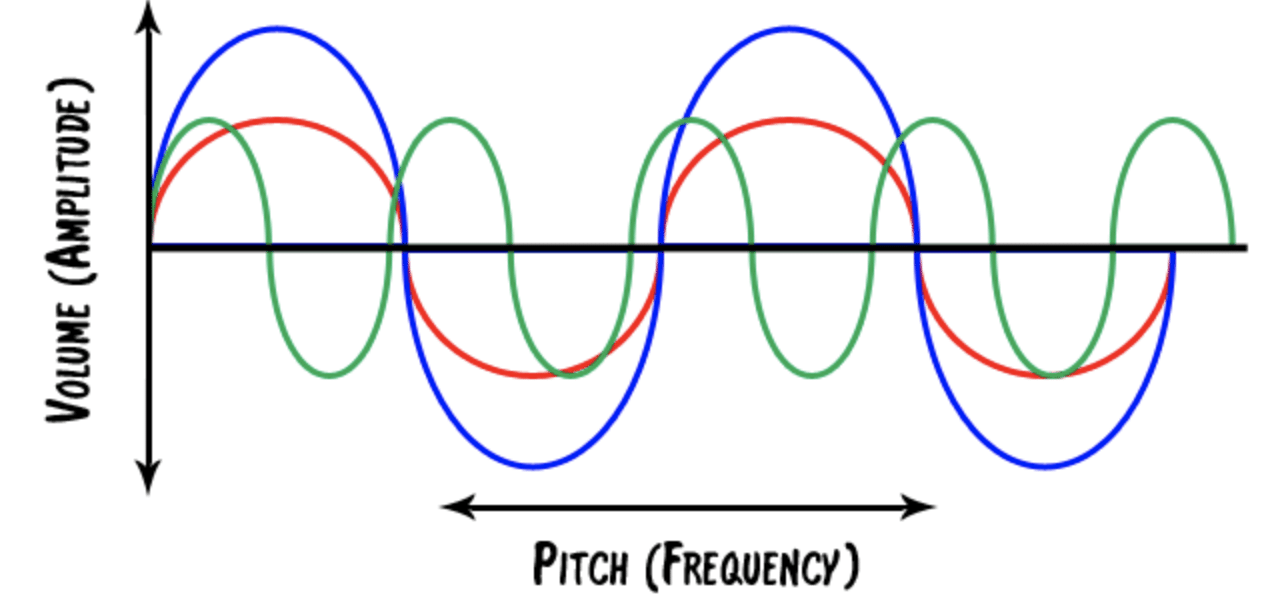
Harmonics are an intrinsic part of how we perceive timbre.
They are the series of pitches that occur above the fundamental frequency of a sound.
These pitches resonate at integer multiples of the fundamental frequency and form what we call the harmonic series.
The presence, absence, and relative strength of these harmonics significantly influence the timbre of a sound.
The harmonic content of a sound is directly influenced by how the sound is produced.
For instance, when a guitar string is plucked, it vibrates in its entirety, producing the fundamental frequency.
Simultaneously, it also vibrates in smaller sections, generating higher frequencies that are multiples of the fundamental.
These higher frequencies are the harmonics and they add complexity and richness to the sound, forming the unique timbre of a guitar.
Overtones & Their Contribution to Sound Quality
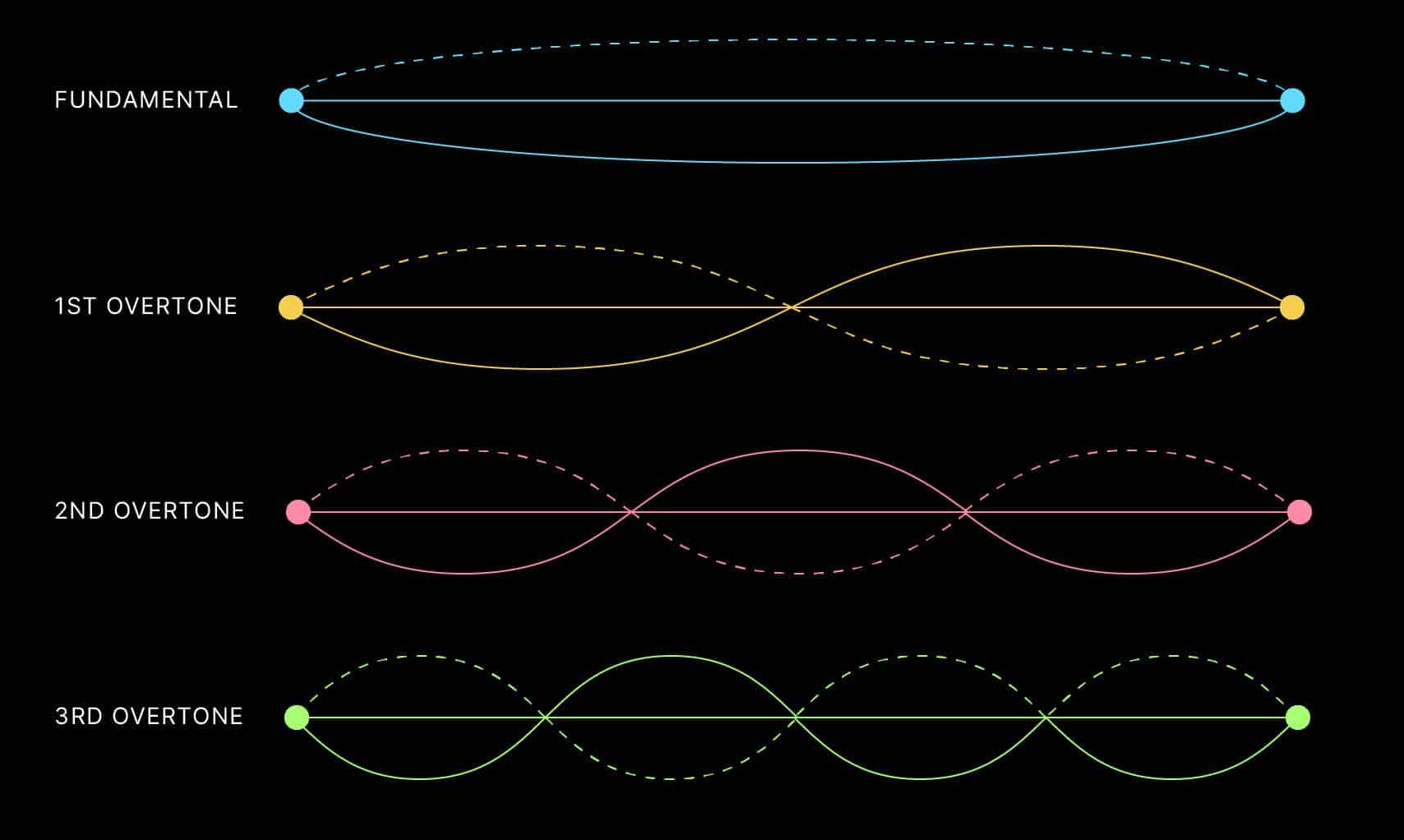
Overtones are essentially the harmonics of a sound, excluding the fundamental frequency.
They are the extra frequencies that resonate along with the fundamental, adding tonal color and complexity.
Our ears perceive this complex blend of frequencies and interpret it as timbre.
The strength and balance of these overtones contribute significantly to the tone quality of an instrument or voice.
Each instrument generates a unique set of overtones, depending on its physical properties and how it is played.
For instance, brass instruments, due to their shape and method of sound production, tend to generate strong, odd-numbered overtones.
This results in a brassy, bright timbre.
Woodwind instruments, on the other hand, produce a more balanced set of overtones 一 resulting in a smoother, more mellow timbre.
In the world of digital music production, understanding overtones opens up new possibilities for sound design.
NOTE: Speaking of sound design, if you’re looking for the most exclusive, groundbreaking sound design secrets of 2023, we’ve got you covered.
With synthesizers and audio effects, you can create sounds with custom overtone structures.
You could design a sound with only even-numbered overtones for a hollow, ethereal timbre, or boost specific overtones to emphasize certain tonal characteristics.
This control over overtones allows you to shape and craft unique timbres, pushing the boundaries of your sonic palette.
How to Manipulate Harmonics for Unique Timbres in Your Beats
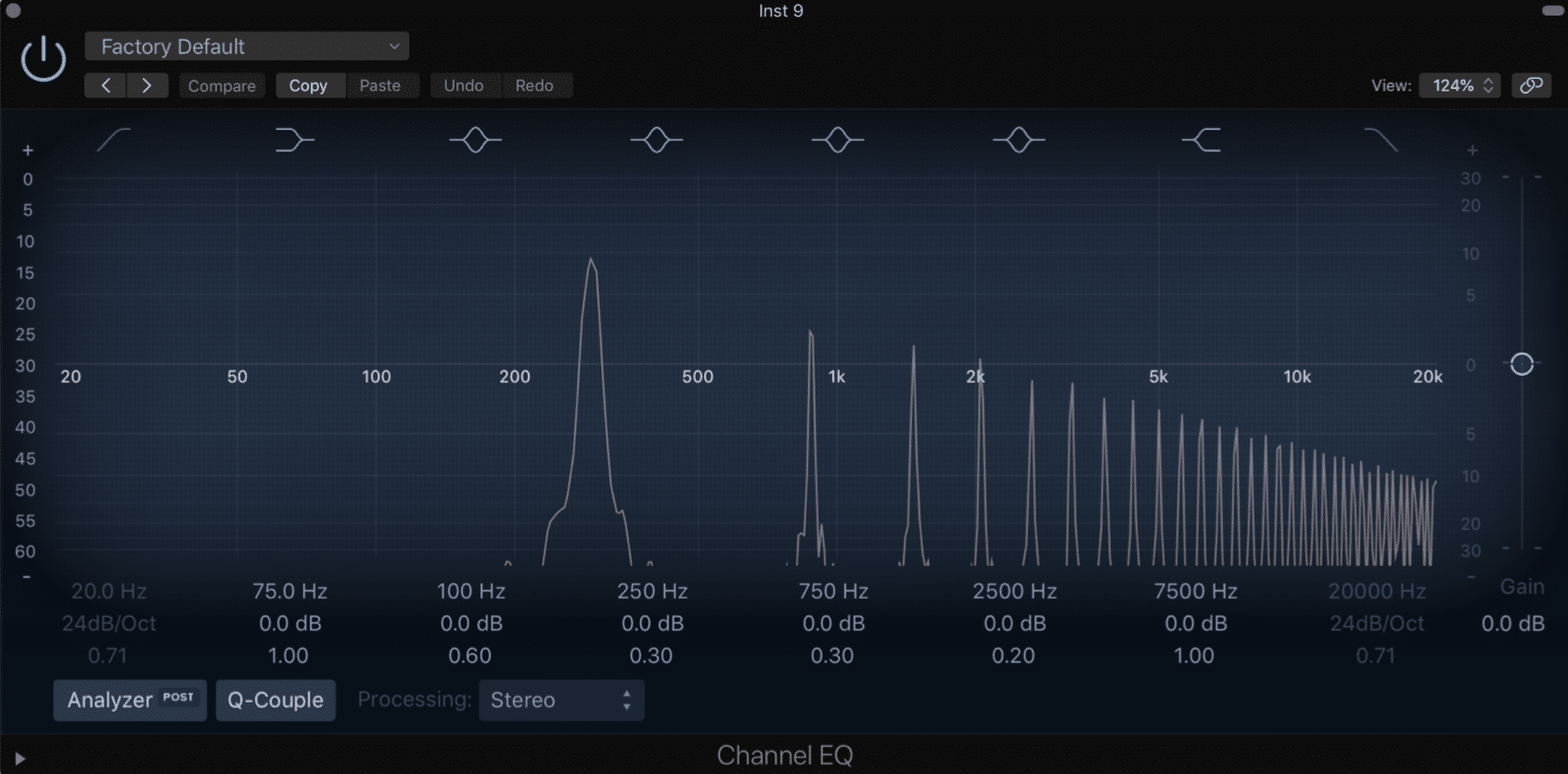
The ability to manipulate harmonics is a powerful tool for creating unique timbres in your beats.
With modern digital tools, you can easily enhance, reduce, or reshape the harmonic content of your sounds.
EQ, for instance, allows you to boost or cut specific frequencies, thereby shaping the harmonic balance of a sound.
A boost in the high frequencies can add brightness to a sound 一 while a cut in the mids can make it sound more distant or hollow.
Another useful tool for harmonic manipulation is distortion.
Distortion works by adding harmonics to a sound, which can make it sound richer, grittier, or more aggressive, depending on the type and amount of distortion used.
For example, adding a bit of distortion to a bass sound can make it more audible on smaller speakers.
While heavy distortion on a guitar can create a powerful, rock-inspired tone.
Lastly, synthesizers offer a vast playground for harmonic manipulation.
With a synthesizer, you can design sounds from the ground up, selecting and shaping the fundamental frequency and its harmonics to create a unique timbre in music.
You can craft sounds with a wide range of timbres by adjusting:
- The waveform
- Filter settings
- Modulation parameters
From warm and mellow pads to sharp, cutting leads, anything is possible.
These tools allow you to experiment with harmonics and their impact on timbre.
As well as a deeper level of control over your sound and enabling you to create a unique sonic identity for your beats.
Creating Unique Sound through Pitch & Timbre Manipulation
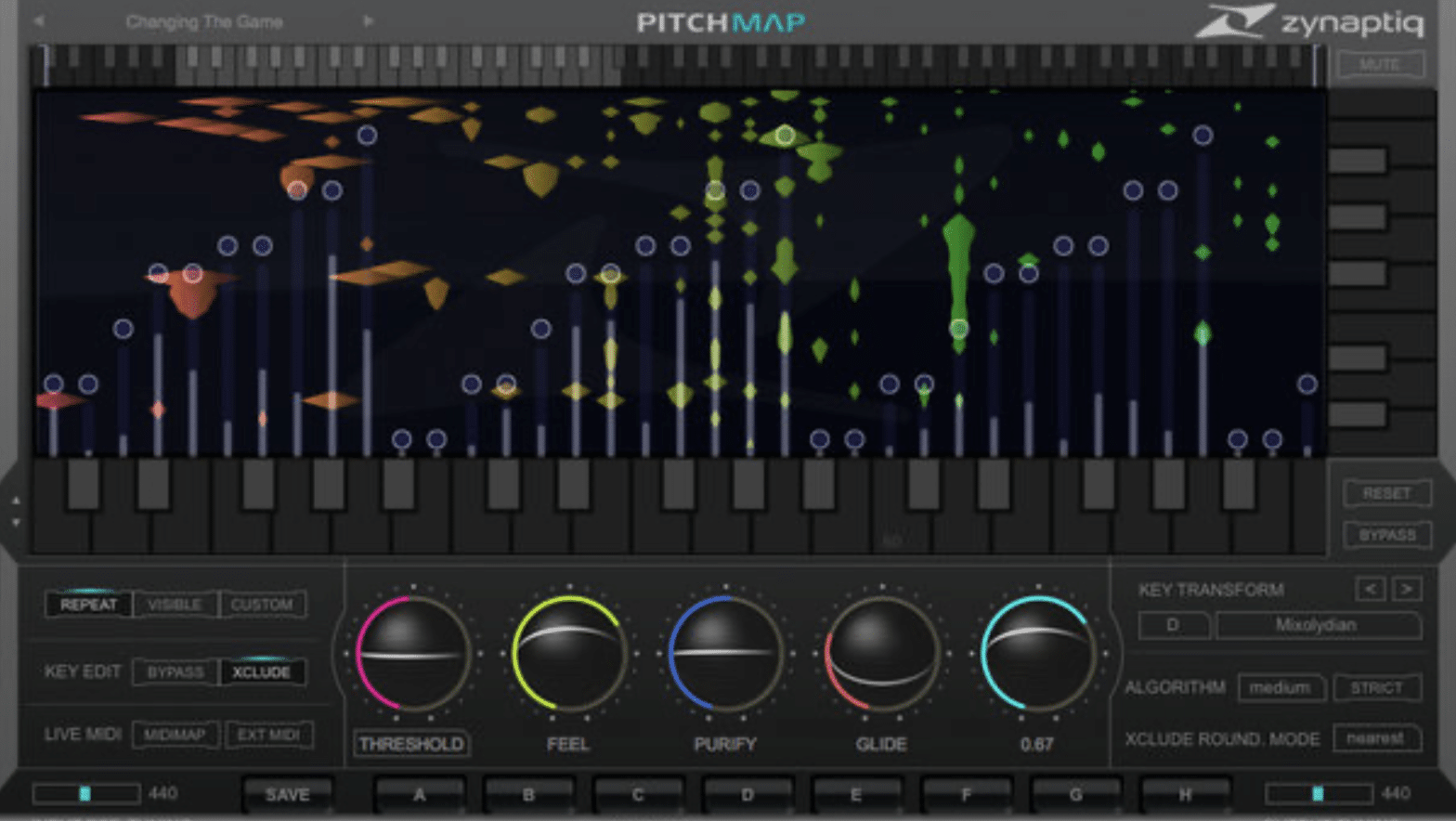
Manipulating pitch and timbre in music can lead to a diverse array of sounds and textures.
By shifting the pitch of a sample, for example, you can achieve timbres that might not be possible with traditional instruments.
- Pitching down a vocal sample can create a deep
- Pitching up a drum loop can make it sound crisp and energetic
Software synthesizers offer extensive control over pitch and timbre.
You can adjust the pitch of an oscillator, shape the timbre with different waveforms, and further modify the sound with filters and effects.
Using modulation sources like envelopes and LFOs, you can create dynamic sounds whose pitch and timbre change over time 一 adding movement and interest to your music.
Furthermore, with techniques like granular synthesis, you can manipulate pitch and timbre on a microscopic level.
This method involves breaking a sound into tiny grains and then manipulating these grains in various ways.
You can transform a simple sound into a complex, evolving texture by:
- Scattering the grains in time
- Altering their pitch
- Changing their playback order
This will open up a whole new dimension of timbral possibilities for you.
Manipulating the Human Voice for Interesting Musical Timbres
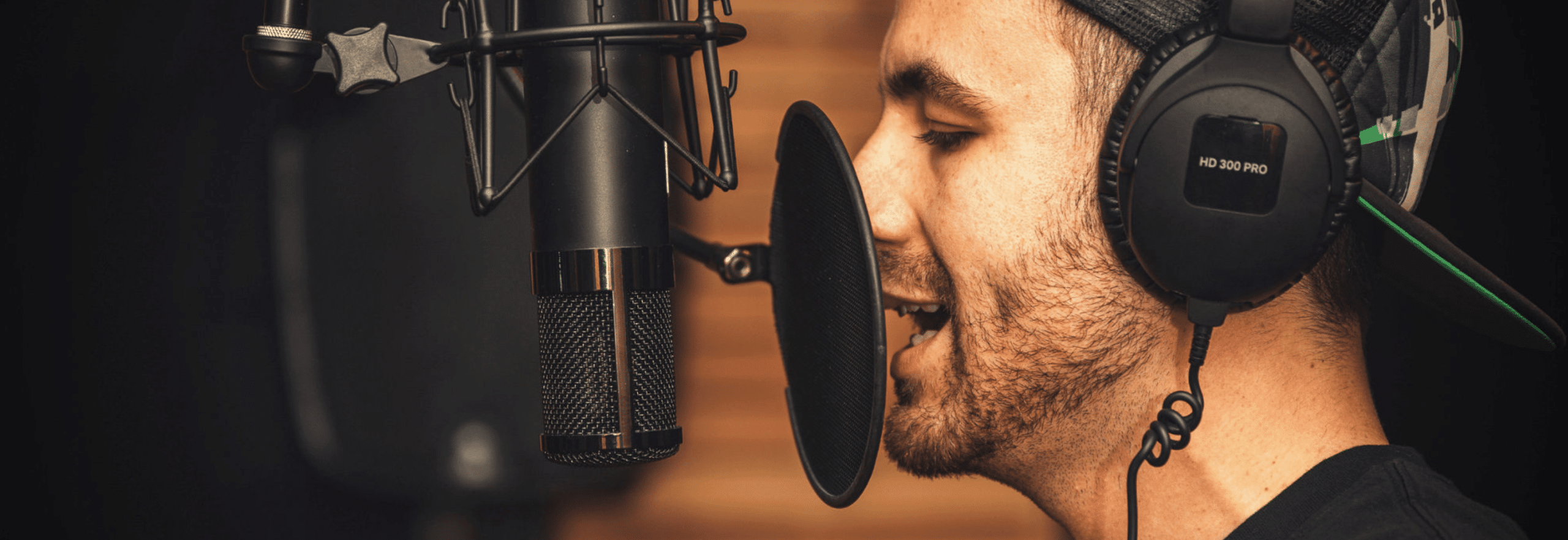
In the realm of music production, the human voice is a powerful tool for creating interesting musical timbres.
With the advent of digital audio technology, it’s possible to manipulate vocal recordings in ways that were previously unimaginable 一 transforming the voice into a versatile sound source.
For example, using pitch correction software like Auto-Tune, you can subtly enhance a vocal performance or push it to robotic extremes for a distinctive, modern timbre.
With a vocoder, you can blend the human voice with a synthesizer, creating a hybrid timbre that is both organic and electronic.
And with sampling, you can chop up and rearrange vocal snippets, turning them into rhythmic patterns or melodic hooks.
You can also alter the spatial characteristics, texture, and tonal color of a voice with digital effects like:
- Reverb
- Delay
- Distortion
- Filters
- Etc.
These manipulations can help to shape the vocal timbre to fit the mood of your music.
Whether it’s an intimate ballad, a high-energy dance track, or an experimental sound collage, you can do it all.
By understanding and experimenting with these tools, you can harness the power of the human voice and create unique musical timbres that captivate your listeners.
Timbre in Music: Final Thoughts
From understanding what defines timbre in music to the complex interplay of harmonics & overtones, our journey through the realm of timbre has been nothing short of enlightening.
You now know how timbre in music can bring life, depth, and uniqueness to your beats; turning the ordinary into something extraordinary.
Now the only left to do is put your knowledge into practice.
And what better tool to aid you in this process than these insanely pristine, intriguing, and unique free Serum Essentials.
This pack is loaded with meticulously crafted presets that offer a vast palette of timbres for you to experiment with.
Paired with the versatile Serum itself (known for its unparalleled frequency manipulation capabilities), you’ll have all you need to explore timbre, overtones, harmonics, and more.
Not only will you be able to hear these elements in action, but by using the presets and tweaking them in Serum, you’ll gain practical experience manipulating timbre.
You’ll be able to sculpt unique sonic textures, understand how different frequencies interact, and create sounds that truly resonate with your vision.
The exciting world of sound is at your fingertips, and with the newfound understanding of timbre, there’s no limit to the sonic wonders you can create.
Until next time…







 40 Chord
Progressions
40 Chord
Progressions

Leave a Reply
You must belogged in to post a comment.